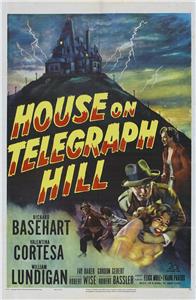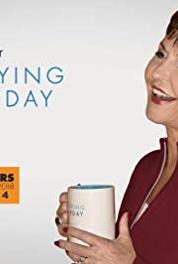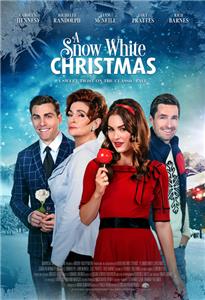Concentration camp survivor Victoria Kowelska finds herself involved in mystery, greed, and murder when she assumes the identity of a dead friend in order to gain passage to America.
La maison sur la colline (1951) Online

Victoria has survived Nazi concentration by assuming the identity of one who died there. She arrives in San Francisco to see her "son" just as the boy's great-aunt dies leaving a lot of money to be inherited. Victoria falls in love with the boy's trustee Alan Spender, and they move into the mansion on Telegraph Hill. Living life in a new identity isn't without its dangers, however.
| Cast overview, first billed only: | |||
| Richard Basehart | - | Alan Spender | |
| Valentina Cortese | - | Victoria Kowelska (as Valentina Cortesa) | |
| William Lundigan | - | Major Marc Bennett | |
| Fay Baker | - | Margaret | |
| Gordon Gebert | - | Christopher | |
| Steven Geray | - | Dr. Burkhardt | |
| Herbert Butterfield | - | Joseph C. Callahan | |
| Kei Thin Chung | - | Kei - Houseboy | |
| John Burton | - | Mr. Whitmore | |
| Katherine Meskill | - | Mrs. Whitmore | |
| Mario Siletti | - | Tony, the Grocer | |
| Charles Wagenheim | - | Man At Accident | |
| David Clarke | - | Mechanic | |
| Tamara Schee | - | Maria | |
| Natasha Lytess | - | Karin Dernakova |
Richard Basehart and Valentina Cortese were married in 1951.
Julius Castle, a restaurant with a castle-like exterior located on San Francisco's Telegraph Hill, was used as the exterior of the house in the film. The filmmakers built a mansion-like exterior around parts of the restaurant to hide certain elements (such as the "Julius Castle" sign on the outside wall). Built in 1922, Julius Castle served as a high-class restaurant until it closed in 2008. (It is currently for sale.)
The grocery store where Tony worked was an actual store called Speedy's. It was open 94 years from 1914 to 2008 at 301 Union Street San Francisco, CA 94133. Google Maps Streetview shows that the corner store building still looks similar to the movie.
Thr role of the real Karin Dernakova in the concentration camp was played by Natasha Lytyss who just a few years later was employed by Marilyn Monroe as her first on and off set drama coach until being replaced be Actors Studio guru Lee Strasberg and his wife Paula, who served as on set coach in the last 6 Monroe films.
The portrait shown throughout the movie as "Aunt Sophie", was a painting of actress Helena Benda.
Other actors considered for the Richard Basehart role include James Mason, Hugh Marlowe, Richard Widmark, Dana Andrews, John Lund, and Richard Conte.
Other actresses considered for the Fay Baker role of Margaret include Andrea King, Jayne Meadows, Audrey Totter, Nancy Reagan, Mercedes McCambridge, Marsha Hunt, Ann Savage, and Uta Hagen.
Furnishings and props for the mansion interior were acquired by property master Tom Little from the estates of the Aga Khan III and David Belasco.








User reviews